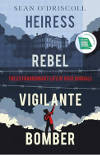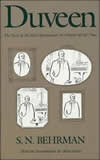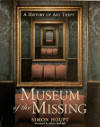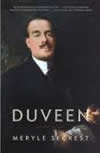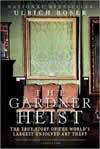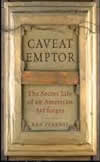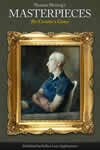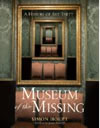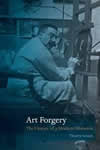On April 27, 1974, along with a Goya, two Gainsboroughs, three Rubens and twelve more paintings, Vermeer's late Lady Writing with her Maid was stolen from the Russborough House, near Dublin, the home of Sir Alfred Beit, by armed members of the Irish Republican Army.In 1952, Sir Alfred and Lady Beit purchased Russborough House in Ireland, where they installed their art collection, one of the finest in the country.
The dark-haired, young, British heiress, Rose Dugdale, knocked on the door of Russborough House and, feigning a French accent, requested assistance for her stalled car. When the door was opened, three masked men armed with AK-47 assault rifles stormed through the entrance forcing the butler's son to guide them to the library where they found Sir Alfred Beit (aged 71) and his wife, Lady Clementine listening to music. The intruders tied them up, dragging Lady Clementine to the mansion's basement. Sir Alfred watched from the library as Dugdale personally selected the paintings to be stolen.
The gang pried the rare paintings from their frames using screwdrivers. Dugdale occasionally stopped for a moment to shout "Capitalist pigs!" at Sir Alfred. The thieves fled the house within ten minutes, loading nineteen paintings into their vehicle, a silver Ford Cortina. The son of Beit's butler, who had himself been tied up after having guided the gang through the mansion. He wiggled free after ten minutes and telephoned the police.
The stolen art was valued at £8 million; it was, at the time, the greatest art theft in history. "They have taken the cream," Sir Alfred said following the robbery.
A ransom letter, accompanied by pages torn from Beit's diary during the theft, demanded the release of two prisoners (Dolours and Marion Price) accused of bombing London's Old Bailey in exchange for five paintings, and the equivalent of $1.2 million for the purchase of arms for the others. Evidently, Dugdale had planned to take advantage of the fact that the value of Old Masters paintings was skyrocketing.
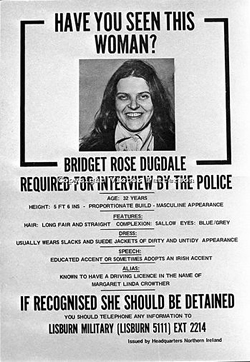

Johannes Vermeer
c. 1670–1671
Oil on canvas, 71.1 x 58.4 cm.
National Gallery of Ireland, Dublin
Unlike the other great art thefts, the Russborough pictures were retrieved within a few weeks. Police instructed the gardai.The Gardaí ("Guardians"), is the police force of Ireland. to check if anyone with a French accent had checked in at holiday accommodations throughout Ireland. On May 4, two gardai questioned a farmer named Con Hayes who told them that a French-speaking woman who called herself Mrs. Merime'e and gave a London address had rented his wife's cottage just the day before at Glandor, Co Cork, 200 miles from Dublin. Following this lead, police found that the London address did not exist and began to keep a watch on the cottage that Dugdale had rented two days earlier. On May 5, 1974, the young woman borrowed the farmer's car and, when she returned, she was surrounded and arrested without incident. The police were alert that her heavily armed IRA compatriots might intervene if they were nearby. In the car, police discovered sixteen of the stolen canvases. The remaining three paintings, the most valuable, including the Vermeer, were found unhurt in the house. Vermeer's Lady Writing a Letter with her Maid had received only a few small scratches.
But, who could have imagined that the incident would have led to a further unintended discovery? The recovered paintings were sent to the National Gallery of Ireland, where they could be inspected and repaired. When the conservator Andrew O'Connor removed the thick layer of varnish and overpaint that obfuscated the Vermeer, the red wax seal that had not been seen for perhaps hundreds of years appeared on the room's floor tiles.
Dugdale, was raised in English high-society and graduated from Oxford, but after a brief period of lecturing at Bedford College and working at the UN, renounced her family's inheritance and became a leftist IRA militant. Earlier in 1974, Dugdale had taken part in a botched bombing attempt on Strabane RUC station where she and IRA team dropped bombs from a helicopter. In June, 1974 she was brought to trial for the stolen paintings alone since no one else of the gang had been caught. Dugdale pled "proudly and incorruptibly guilty" and was sentenced to nine years in prison, still denouncing Britain as the enemy and accusing the Dublin government of collusion. After her release, Dugdale continued to work for the IRA, albeit in the political party, Sinn Féin. She now lives in Dublin and works in adult education.

Russborough House has been associated with an incredible four art thefts since Sir Alfred housed his art collection there.
Sir Alfred Lane Beit, 2nd Baronet
from: https://en.wikipedia.org/wiki/Sir_Alfred_Beit,_2nd_Baronet
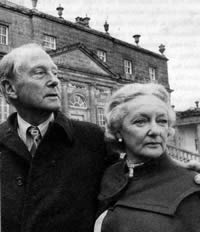
and his wife, Lady Clementine
Sir Alfred Lane Beit, 2nd Baronet (1903–1994) was a politician, art collector and philanthropist and honorary Irish citizen.
His uncle was Alfred Beit, a South African mining millionaire, and his father Otto Beit was awarded the KCMG in 1920 and was created a baronet in February 1924.
At the age of 27, Alfred Lane Beit, now Sir Alfred, inherited his father's title, a large fortune, a house in Belgrave Square, a country estate and a world-class collection of art which included Vermeer (Lady Writing a Letter with her Maid), Goya, Rubens, and Gainsborough.The collection had been assembled by Otto with the constant vigilance of the powerful German museum director Willhem Bode. In 1939, following a short engagement, Sir Alfred married Clementine Mitford, a great beauty and first cousin to the much publicized Mitford sisters.
During the Second World War, Alfred served in the R.A.F. and in 1940, the multi-lingual couple was in France where Alfred operated on behalf of R.A.F. Intelligence. They narrowly escaped capture getting out of France after Dunkirk.
In 1952, Beit bought the Russborough House in County Wicklow, Ireland and moved his art collection there. The Beits continued to visit Africa in the 1950s and, having no children of their own, they paid for schools, libraries and health clinics in Zimbabwe, Malawi and Botswana. Despite their love of Africa, they were appalled by the apartheid system that coincided with their move there and decided to leave in 1952.
Living quietly in Ireland, their main interests centered on supporting the fine arts and the Wexford Festival Opera.
In 1976, the Beits created the Alfred Beit Foundation to preserve Russborough and its art collection for the future enjoyment of the Irish people. In 1978, the house and grounds were opened to the public, for the first time in its history.
After the first two robberies, in 2001, two more paintings (a Bellotto and a Gainsborough) were stolen. Both were recovered in 2002. In 2002, another robbery took five paintings, including two Rubens.
After the thefts, the Irish state moved the unique collection to Dublin, making Russborough less attractive to tourists.
Beit was made an honorary Irish citizen in 1993, in recognition of his philanthropy, including a 1987 donation of seventeen masterpieces to the National Gallery of Ireland.
The paintings donated had an estimated value of between IR£50 million and IR£100 million.
When his wife Clementine died in 2005, her will stated that Alfred Beit's diaries should be kept secret until 21 years after Queen Elizabeth II's death or 70 years after Lady Beit's own death, a clause which sparked speculation in the media that her diaries might refer to the private life of the queen.
The Beits' cultural work is carried on by the Alfred Beit Foundation, founded in 1976 and based at Russborough. In December 2006 the Foundation sold a collection of Italian medieval bronzes for £2,000,000 at Christies in London to support ongoing repairs at Russborough.
† FOOTNOTES †
Thefts, forgeries & the Van Meegeren case
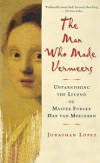 The Man Who Made Vermeers: Unvarnishing the Legend of Master Forger Han van Meegeren
The Man Who Made Vermeers: Unvarnishing the Legend of Master Forger Han van MeegerenJonathan Lopez
2009
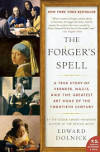 The Forger's Spell: A True Story of Vermeer, Nazis, and the Greatest Art Hoax of the Twentieth Century
The Forger's Spell: A True Story of Vermeer, Nazis, and the Greatest Art Hoax of the Twentieth CenturyEdward Dolnick
2009
